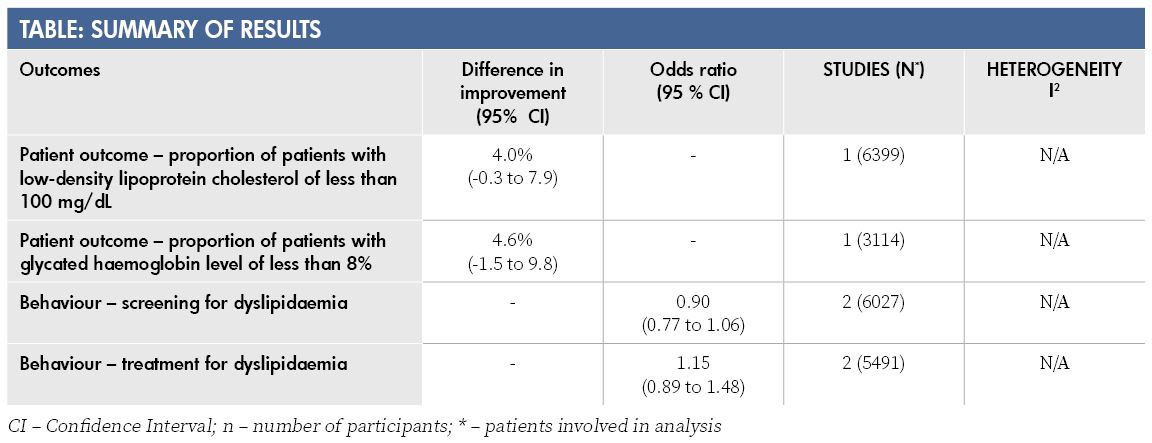Clinical bottom line
Low-quality evidence suggests that e-learning is no more effective than traditional teaching methods for improving patient outcomes, health professionals’ behaviours, skills or knowledge. Other factors than presuming e-learning is superior should guide decisions on which approach to use.
Clinical scenario
As a nurse educator, you are aware that e-learning – online educational programmes – offer flexibility and increased access to learning. e-Learning is also generally thought to be more effective than traditional learning methods for changing nursing behaviour, skill and knowledge – but is this true?
Question
In comparison to traditional learning methods how effective are e-learning programmes for changing nurses’ practice impacting on patient outcomes?
SEARCH STRATEGY
PubMed-Clinical Queries (Therapy/Narrow): e-learning AND nurses.
Citation
Vaona A, Banzi R, Kwag KH, Rigon G, Cereda D, Pecoraro V, et al. e-Learning for health professionals. Cochrane Database of Systematic Reviews 2018, Issue 1. Art. No.: CD011736. DOI: 10.1002/14651858.CD011736.pub2. 22(14):1-88.
STUDY SUMMARY
A systematic review to assess the effects of e-learning programmes versus traditional learning in licensed health professionals for improving patient outcomes or health professionals’ behaviours, skills and knowledge. Inclusion criteria were:
Type of study: Randomised trials and cluster-randomised trials. Excluded were non-randomised trials; programmes focusing on non-clinical topics. Study participants were licensed health professionals (doctors, nurses and allied health).
Intervention: Any education intervention on a clinical topic delivered primarily by internet, extranet or intranet. No restrictions on programme length.
Comparison: Educational interventions on the same topic without access to e-learning (e.g. print books, face-to-face courses, guidelines dissemination).
Outcomes:
Primary Outcome: Objective measures of patient clinical outcomes or health professionals’ behaviour affecting outcomes (such as tests ordered).
Secondary Outcomes: Objective measures of health professional skills (such as demonstrating a procedure or technique) or knowledge (such as factual or conceptual understanding).
Study Validity
Search Strategy: Comprehensive search strategy involving multiple electronic databases, trial registries and review of referenced lists of included trials and e-learning reviews.
Review process: Two authors independently screened the search results for potentially relevant studies, selected the studies, extracted data using a standardised form and conducted risk of bias assessment. Disagreements resolved by consensus.
Quality assessment: Yes, using the standard Cochrane Effective Practice and Organisation of Care Group (EPOC) risk of bias criteria.
Overall validity: A good quality review involving studies of high or unclear risk of bias.
Study Results
Screening 3,465 titles/abstracts and 137 full text articles identified 16 eligible randomised trials. Trials involved 5,679 licensed health professionals; 4,759 mixed health professionals (four trials), 587 nurses (seven trials), 300 doctors (four trials) and 33 childcare health consultants (one trial). Trials were conducted in 10 different countries: eight trials in hospital settings, seven in community/primary healthcare settings and one trial involved health professionals from both hospital and community.
e-Learning was not found to be better or worse than traditional learning for the primary outcome of patient outcomes, or health professional behaviours related to appropriate screening or treatment of dyslipidaemia (see table). There were also no significant differences between teaching methods for outcomes related to improving health professionals’ skills (2,912 health professionals; six studies), or knowledge (3,236 participants; 11 studies). Follow-up varied between studies and ranged from 0 weeks (immediately after training) to 12 months.
- Only one randomised trial measured impact on patient outcomes. Pooling of data (meta-analysis) from studies included in other outcome measurement was not always possible.
- Certainty of the evidence for all outcomes was low. However, these results suggest that e-learning is no ‘magic wand’ and supports approaches to learning that include e-learning, traditional, or a blended approach.
- Common sense indicates advantages of e-learning may include increased accessibility, convenience and costs but these outcomes were not measured.
- It would be interesting to know the comparative effectiveness of both methods for overcoming barriers to changing behaviour relating to lack of confidence, social influences or where teamwork is an essential skill. However, subgroup analysis exploring effectiveness of both approaches by educational content and aim was not possible.
COMMENTS:
- Only one randomised trial measured impact on patient outcomes. Pooling of data (meta-analysis) from studies included in other outcome measurement was not always possible.
- Certainty of the evidence for all outcomes was low. However, these results suggest that e-learning is no ‘magic wand’ and supports approaches to learning that include e-learning, traditional, or a blended approach.
- Common sense indicates advantages of e-learning may include increased accessibility, convenience and costs but these outcomes were not measured.
- It would be interesting to know the comparative effectiveness of both methods for overcoming barriers to changing behaviour relating to lack of confidence, social influences or where teamwork is an essential skill. However, subgroup analysis exploring effectiveness of both approaches by educational content and aim was not possible.
Reviewer: Cynthia Wensley RN, PhD. Lecturer, School of Nursing, University of Auckland [email protected]






















